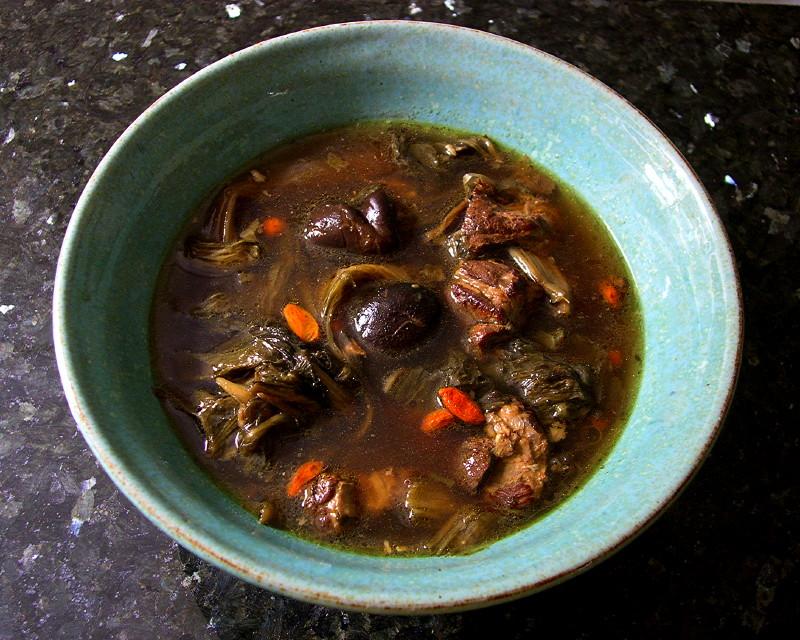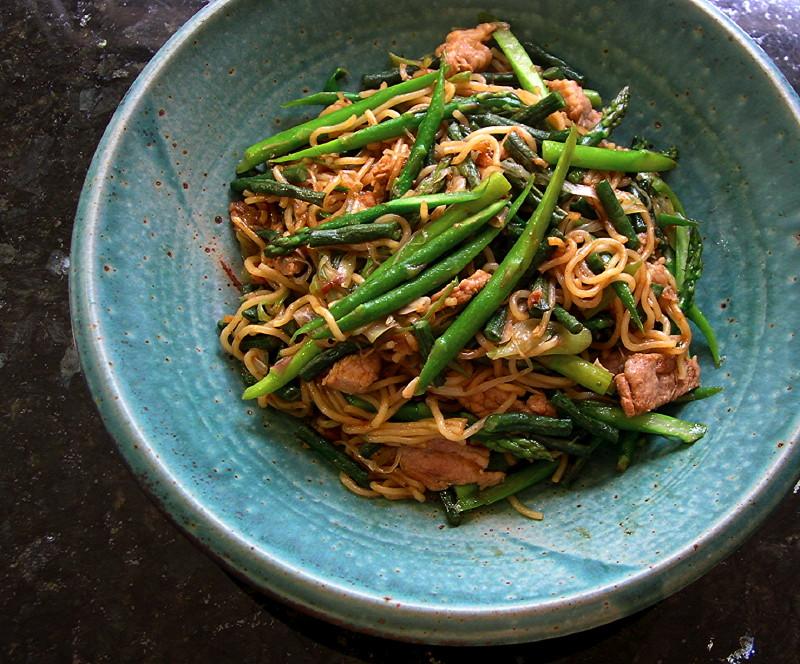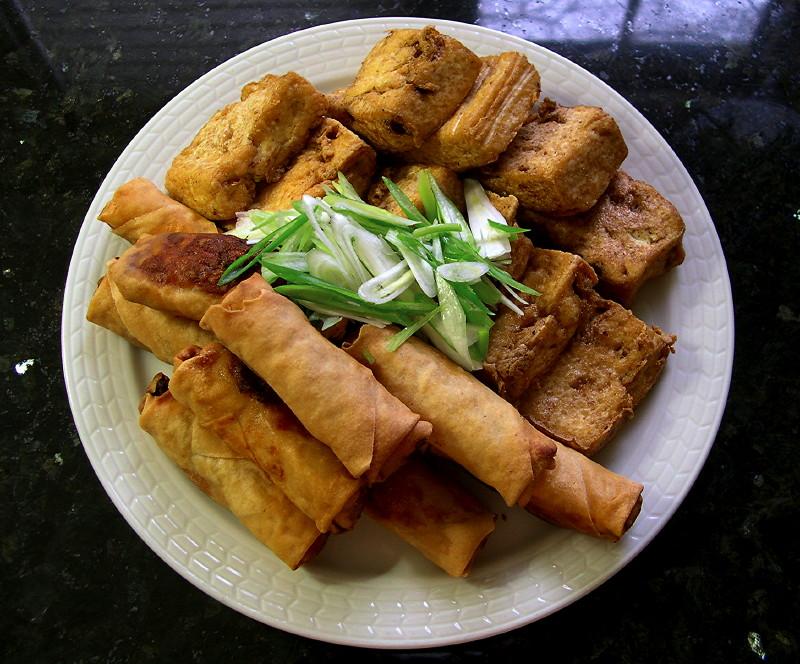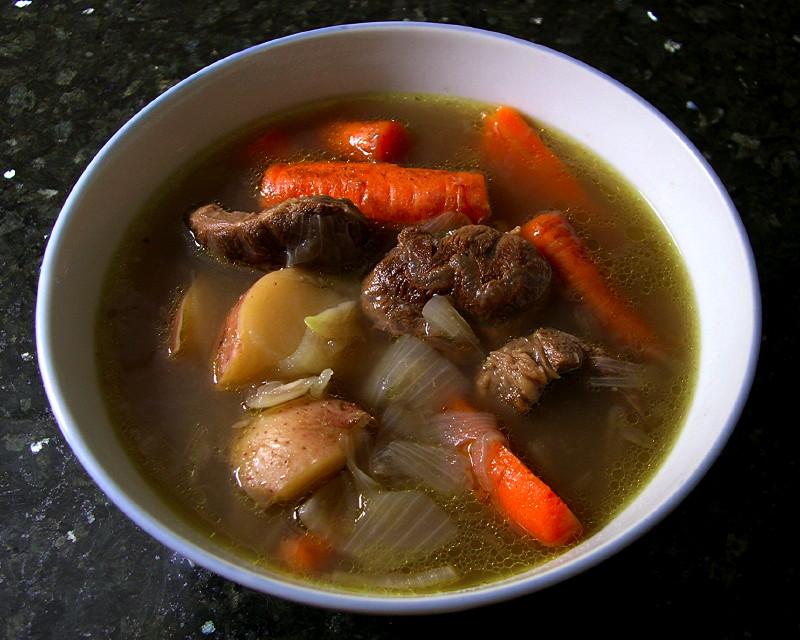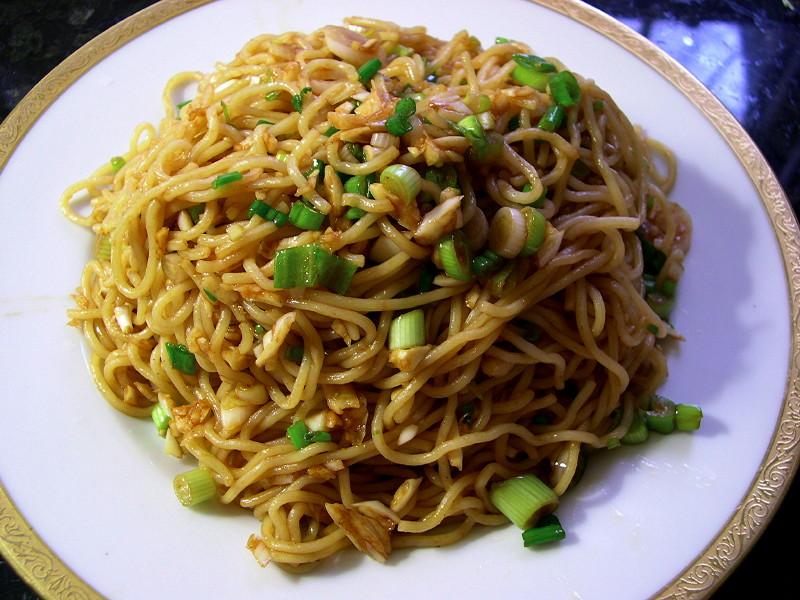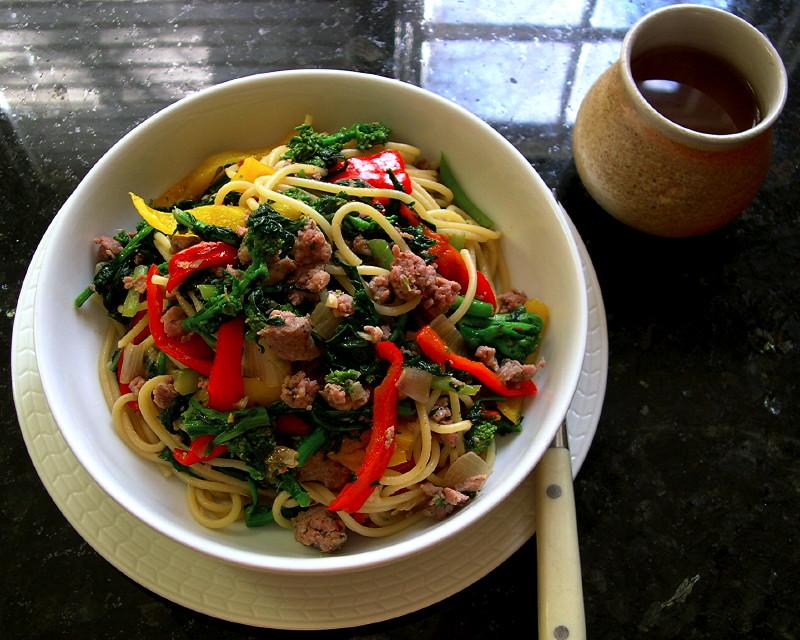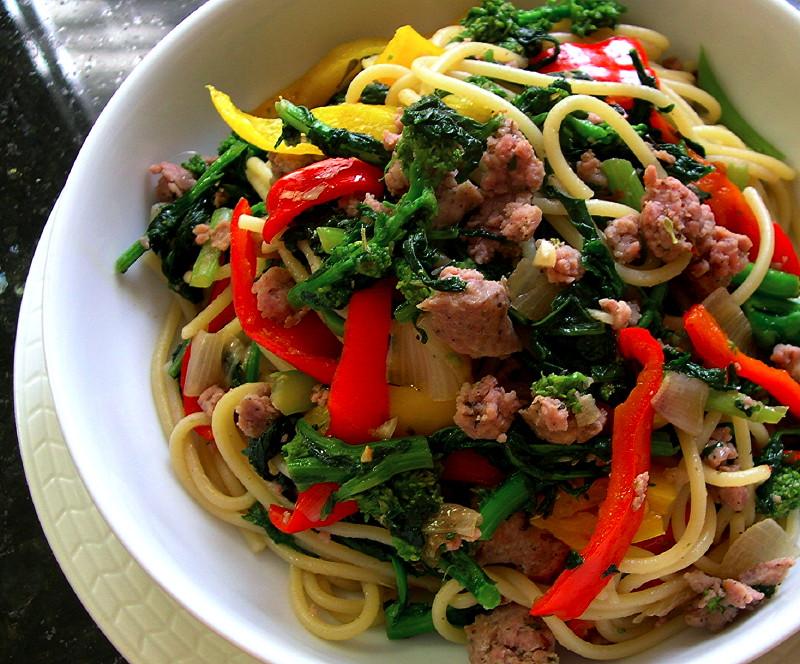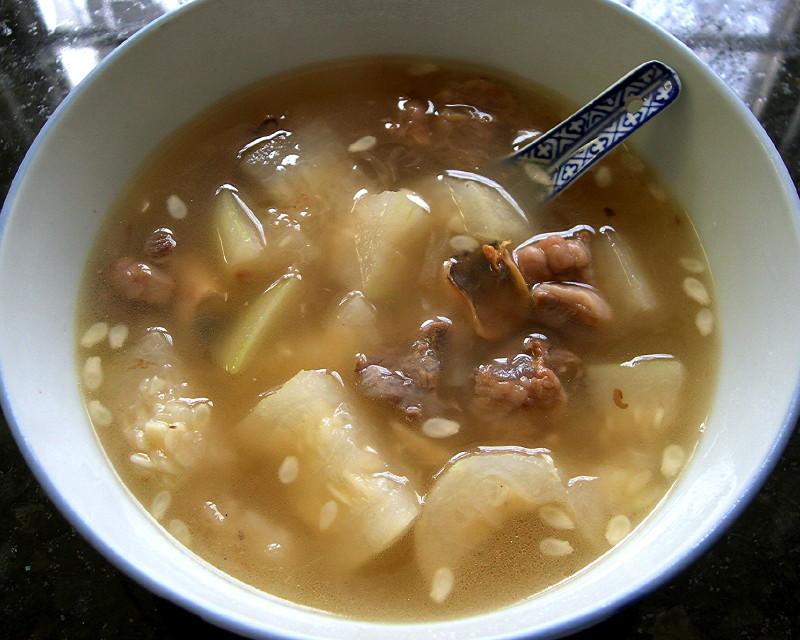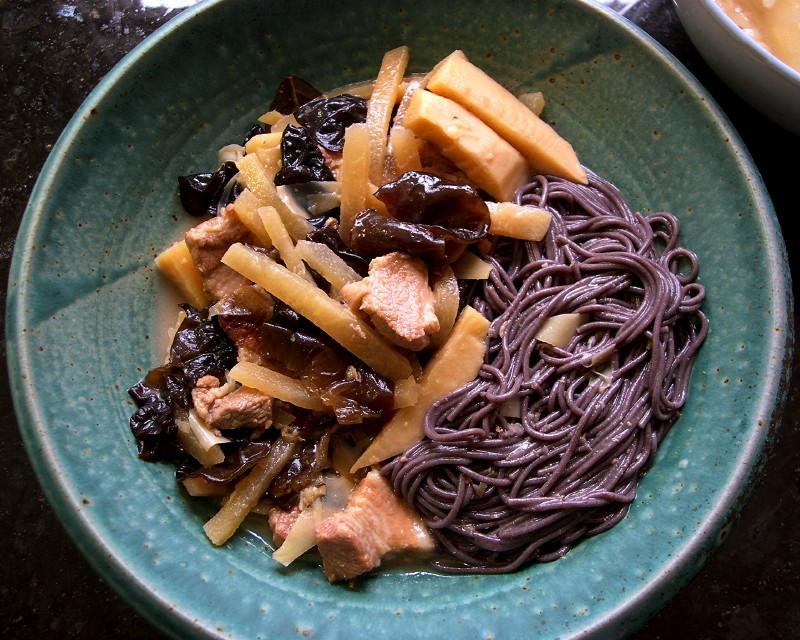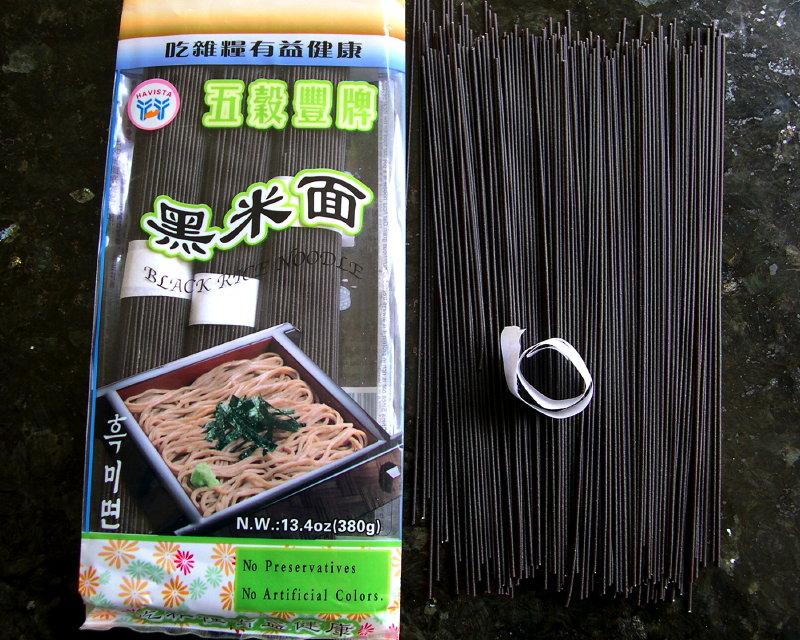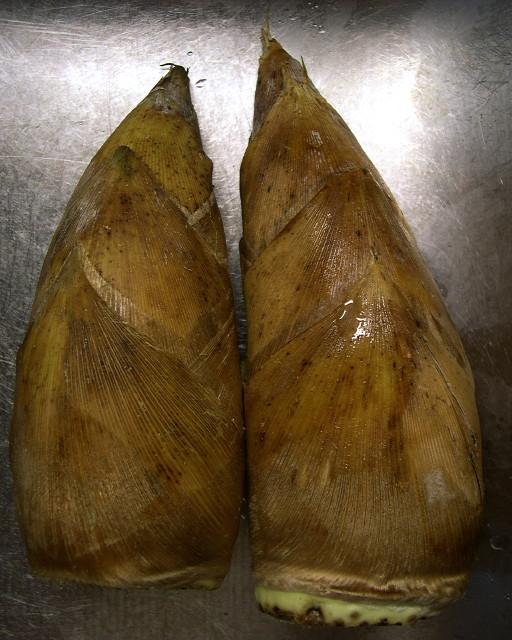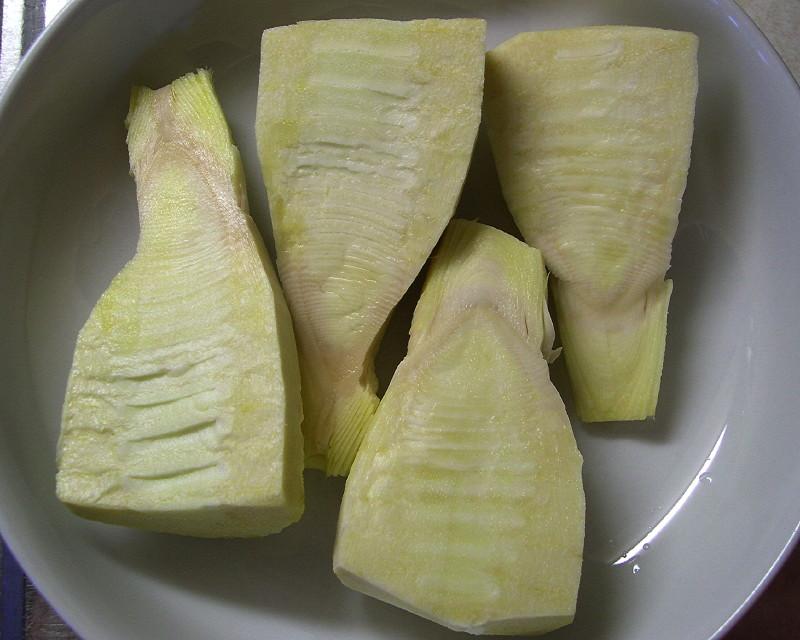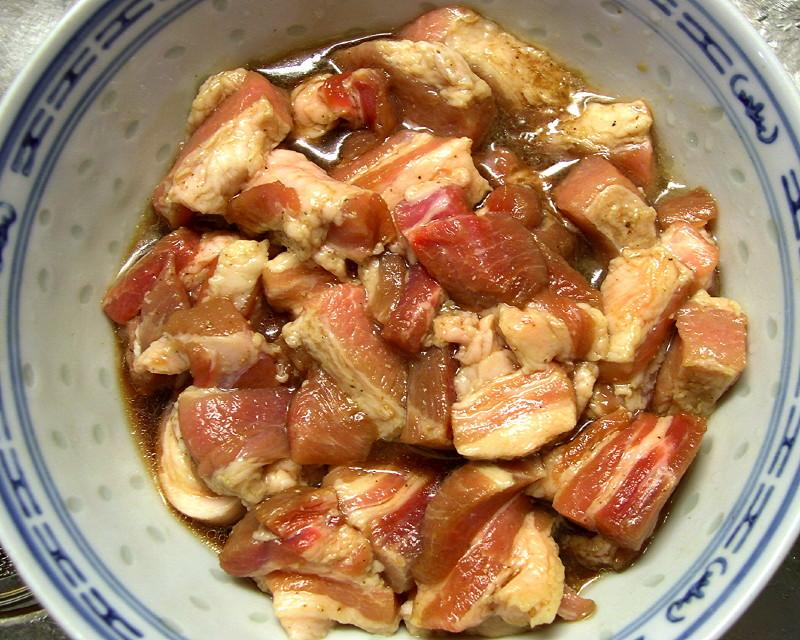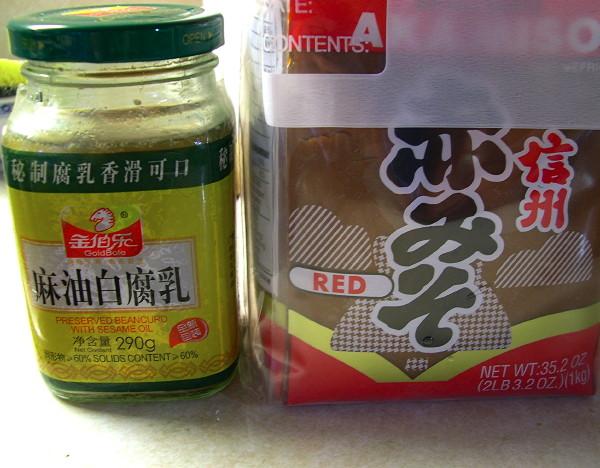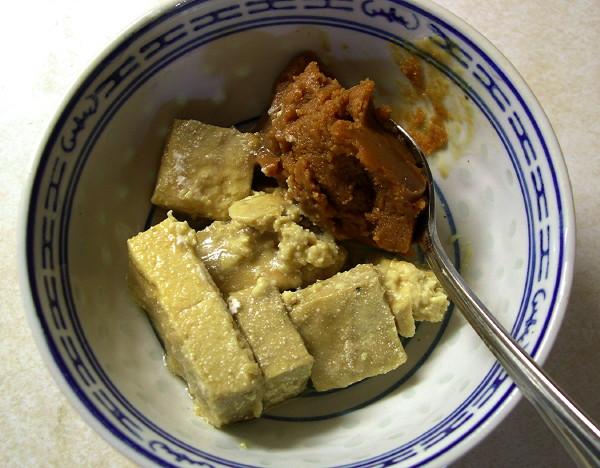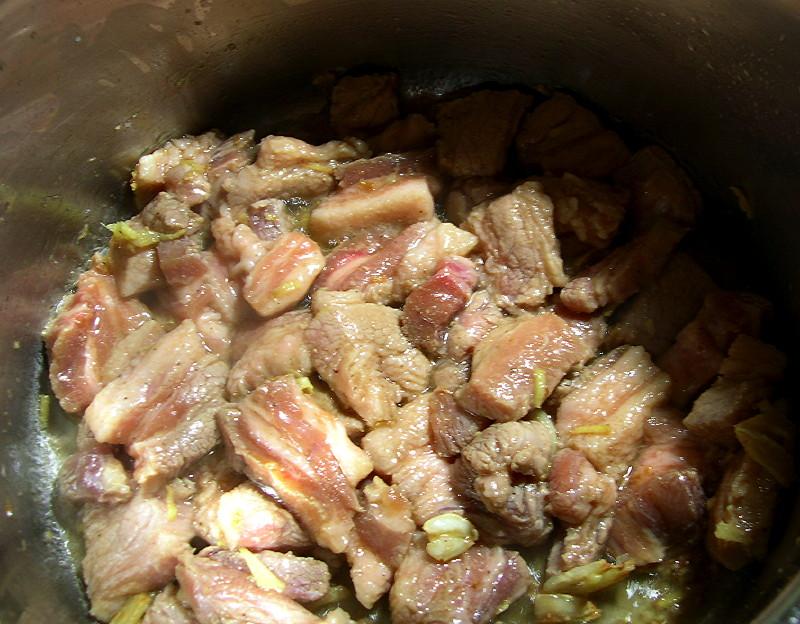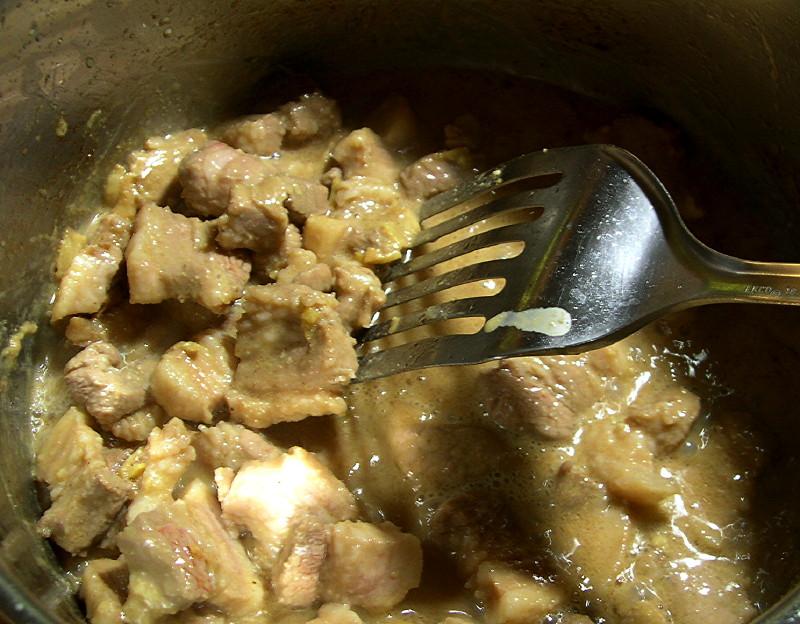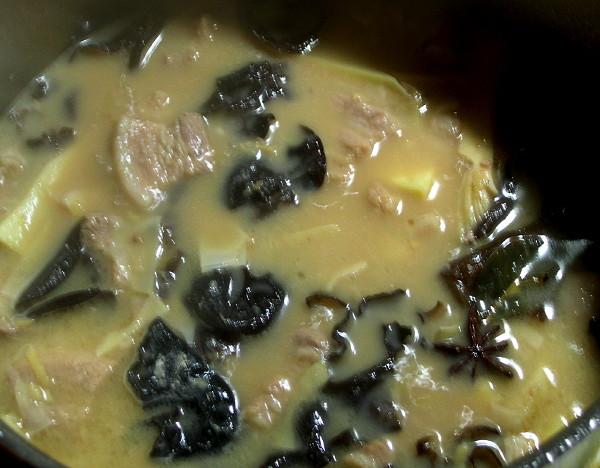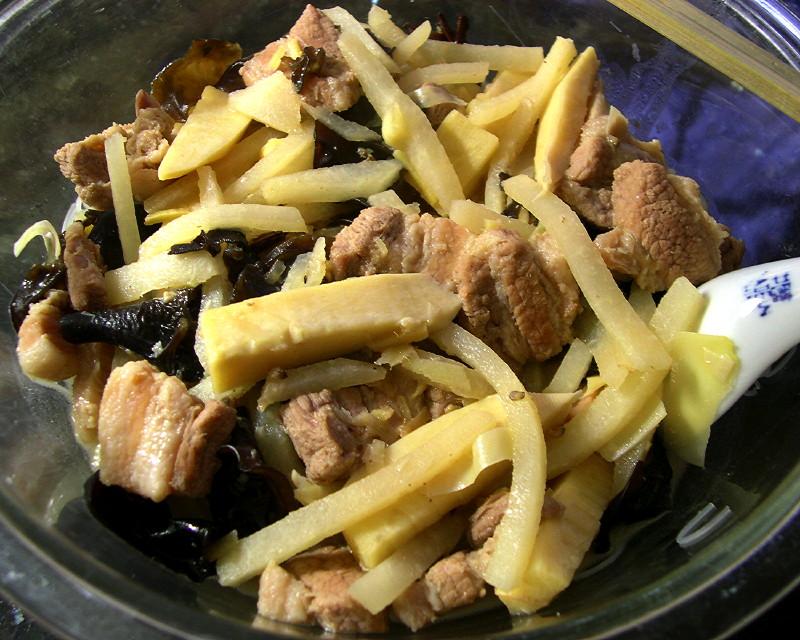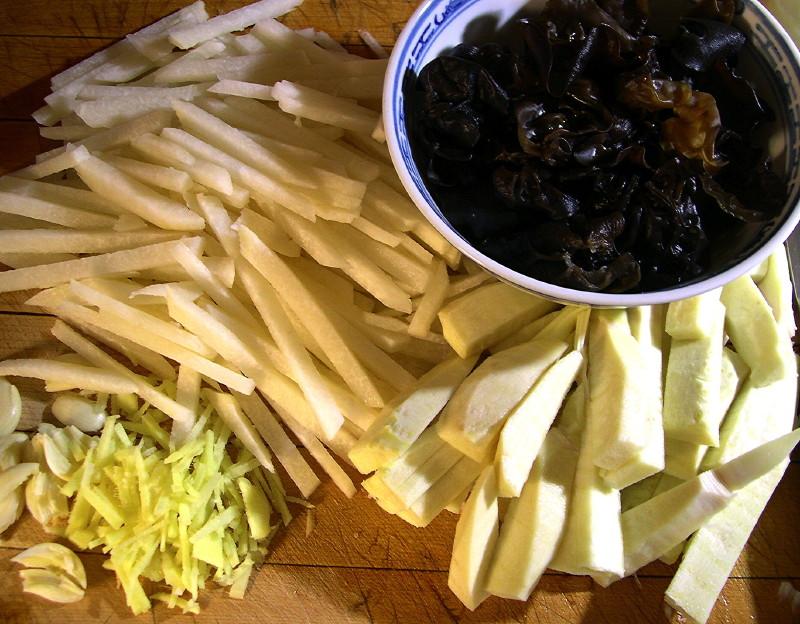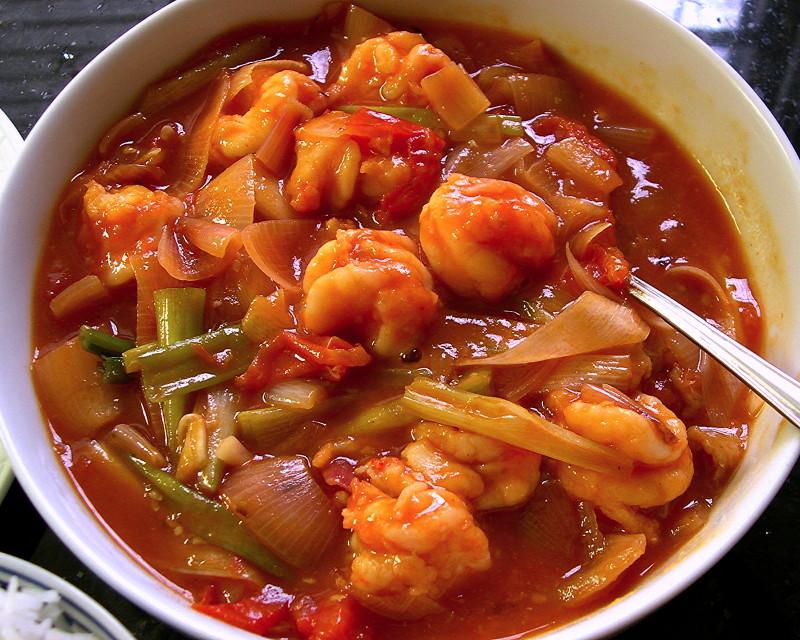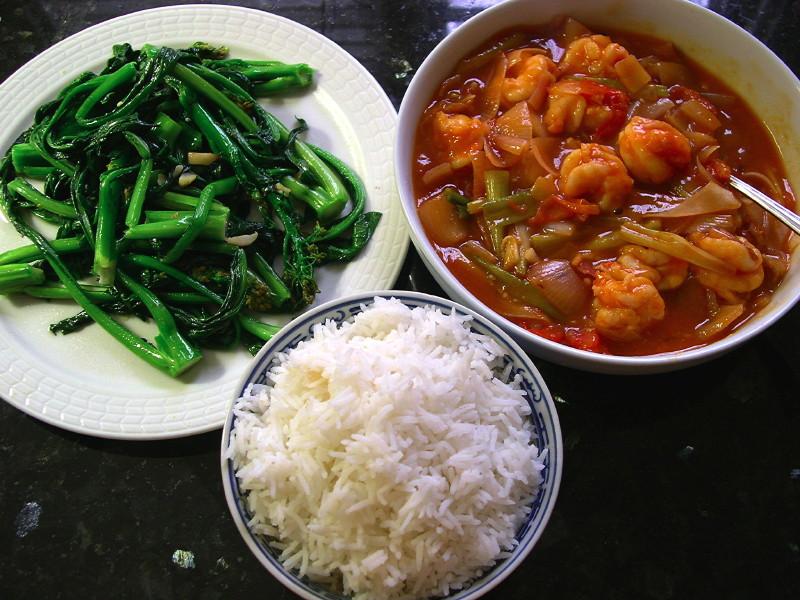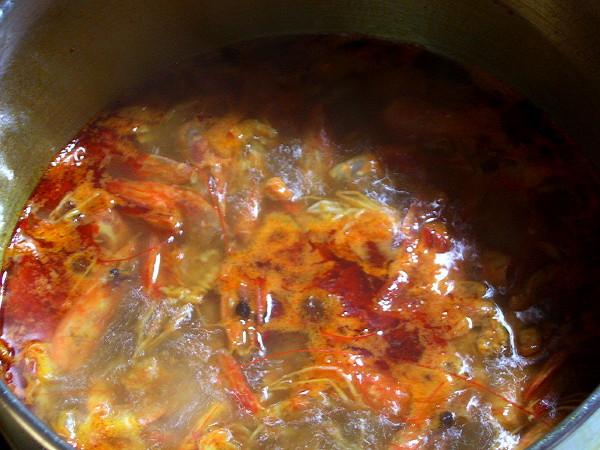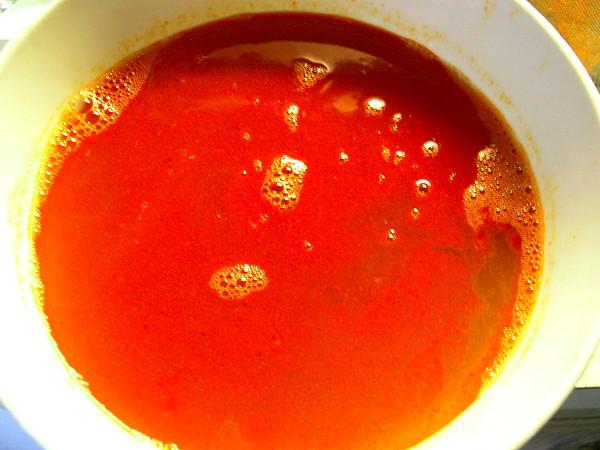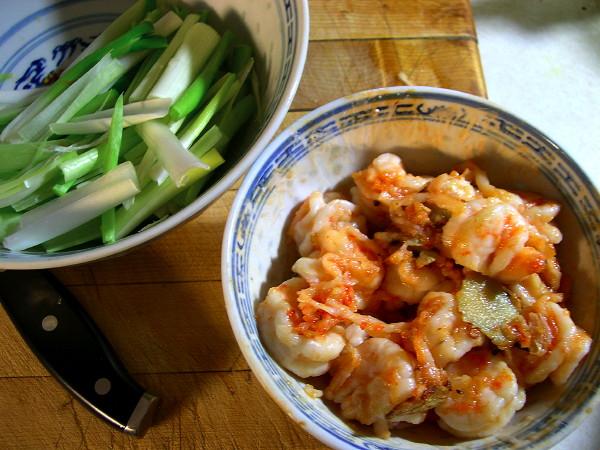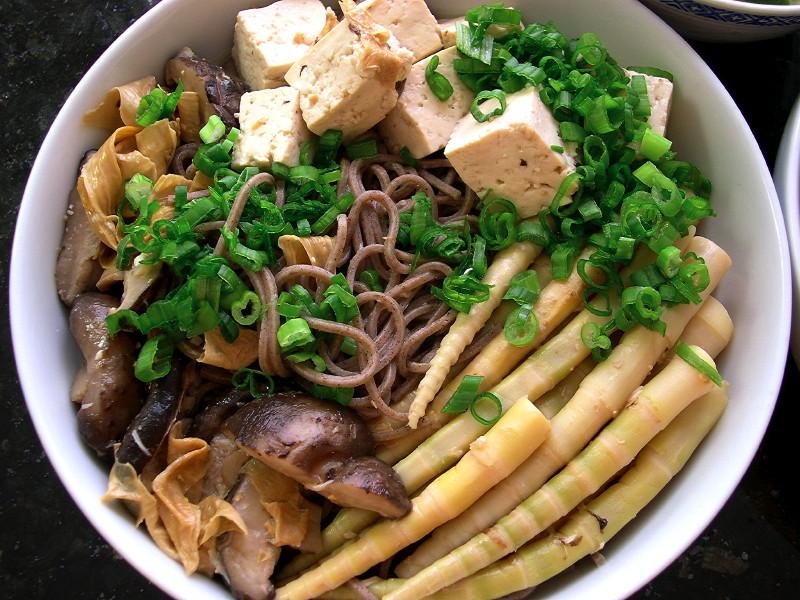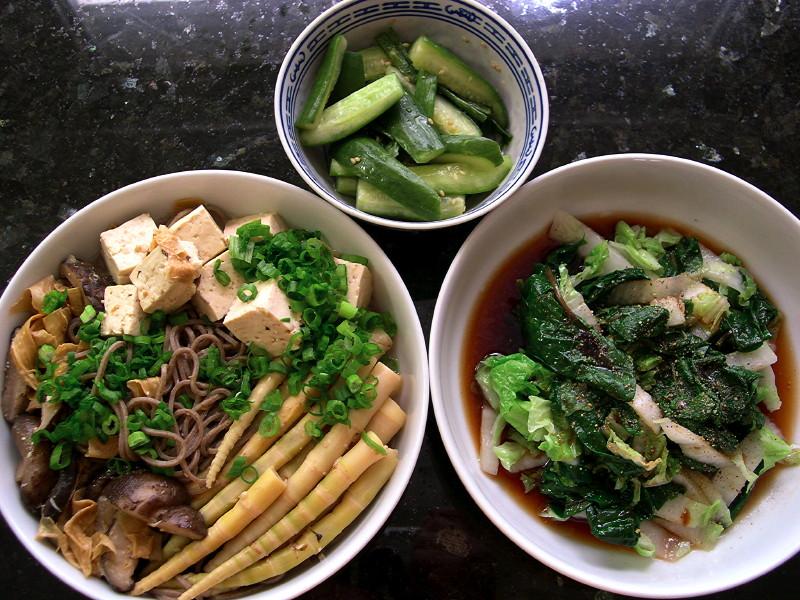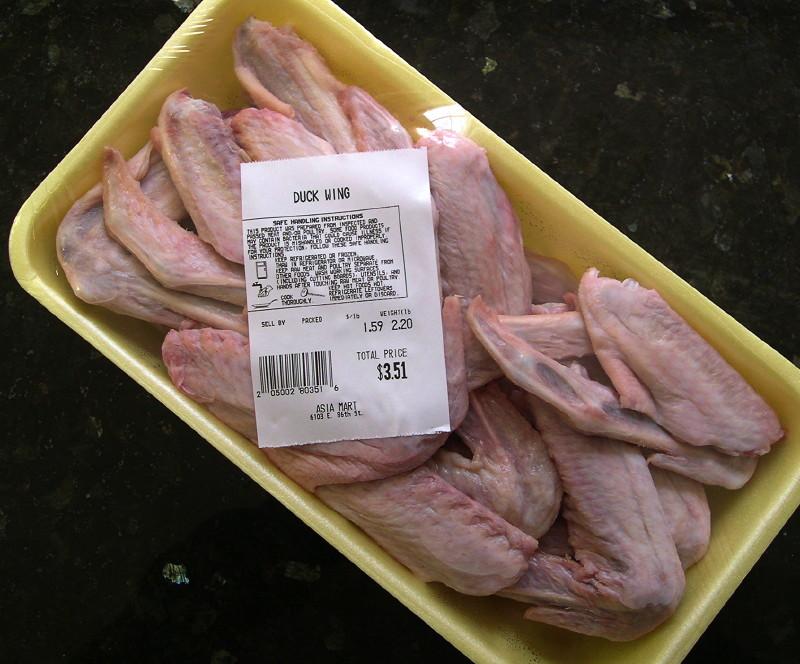-
Posts
3,810 -
Joined
-
Last visited
Content Type
Profiles
Forums
Store
Help Articles
Everything posted by huiray
-
Adding on to what heidih and Smithy said, I don't expect punchy flavor in fresh cod. The texture, mouth-feel, gentle flavor but clearness and clean subtle flavor when it is good and fresh are what I expect. Really fresh cod in my opinion benefits from a simple steaming with ginger, salt, some scallions and a touch of rice wine. Sauces can add flavor as heidih said. If sticking with steaming, for example, I might use Chinese fermented black beans or even non-fermented salted soy beans, plus ginger and garlic plus whatever else I feel like that moment...
-
I confess I am not sure why there is such a following for Rooster Sauce here in the USA. I don't find it that remarkable or exceptional or transcendent in nature which would seem to be what some people (including various chefs - Michael Symon comes to mind) ascribe it to be. There are any number of other commercially available chilli sauces out there (let alone whatever concoctions one whips up oneself) which deserve equal billing at the least, if not surpassing Rooster Sauce in deliciousness. My 2 cents worth. So as far as I am concerned if Huy Fong is forced to cease operations in Irvindale I can only shrug. I'm sure they would relocate in that event, but I won't be stocking up on the sauce whatever happens. My view.
-
Blether, I would have thought that your location in Tokyo would provide a wealth of greens for salads, vegetable dishes, etc etc - in the manner that would be not unexpected in Japanese cuisine. But are you speaking of Western-type greens in your post, which would be less common? Like what would be called "butter lettuce" or "Boston lettuce" in many parts of the USA? Even so, "Romaine" is a common green in E/SE Asia, I would have thought - "Yau Mak Choy" which uses a form of Romaine lettuce is an omnipresent dish all over SE Asia, for example (not sure about the equivalent in Japan) while many other Japanese greens must surely be amenable to incorporation in a Western-style salad? Mizuna, for one. Watercress, cabbage, negi, hakusai (Napa cabbage), cucumbers, etc etc all can go into a salad...and must be readily available... Just thinking out loud here...
-
Interesting. Were these "farm-fresh" eggs (at most a week old), or eggs from the supermarket (i.e. much older than a week or so)? In my hands I found that "farm-fresh" eggs didn't really peel that much more easily when steamed compared with when boiled in the usual manner (with cold water shocking). Then again, "aged" supermarket eggs usually peeled OK when boiled, the better the older they were - as has been commented on in many places, I think.
-
A version of Choy Kon Tong for dinner. Pork short-cut spare ribs, cut into riblets; sautéed w/ smashed garlic in canola oil. Water added. Trimmed & suitably broken-up “choy kon”, soaked only briefly in hot water, added. Small dried Chinese “far koo” mushrooms, soaked for a bit, added in, plus the soaking water. Himalayan salt + sea salt added. Three briefly rinsed dried cuttlefish added. Hon Mirin [Takara] added. Lam Jou added in. Culatello slices (left over from a while ago) added in for a while for a bit of their flavor then fished out. Jozo mirin [Morita] added. Generous handful of goji berries tossed in. Water amount adjusted. Seasoning adjusted. Simmered for a few hours.
-
Stir-fried yakisoba with seasoning and garlic, sliced pork, sliced negi, asparagus, and trimmed Chinese long beans.
-
Chả giò chay and deep-fried firm tofu slices. Eaten w/ Lingham's chili sauce, pickled cucumbers & scallions. Plus some of the beef shin stew from breakfast.
-
http://gothamist.com/2014/04/07/cronut_mouse_droppings.php http://gothamist.com/2014/04/07/dominique_ansel_cronut_rocky.php I enjoyed reading the comments from readers in both articles.
-
Early breakfast today: Beef shin stew. Olive oil, lightly crushed garlic, beef shins cut into rounds, sea salt, sauté; water, simmer; two cinnamon sticks, handful of cloves, simmer; cut-up potatoes, simmer; carrots & onions, simmer.
-
Something I had been meaning to make for a while. "Patan". At least what I ended up with this first time. :-) A very simple dish. Yakisoba [i used Maruchan brand, imported from Japan], blanched in hot water for a few minutes; drained, drizzled with and tossed with black sesame oil, chopped scallions, some light soy sauce, and LOTS OF RAW CHOPPED SMASHED GARLIC. I used a whole head of garlic. It was...potent. But, scrumptious. Maybe I'll use a tad less raw garlic next time. :-D This is a "house staff dish" in a Taiwanese-Chinese shop in Yokohama specializing in pig innard dishes, featured in episode 2 of Season 3 of Kodoku no Gurume (English-subtitled video here; the dish is first mentioned at 16:38 of Part 1, dominates from 5:04 onwards in Part 2, and the preparation briefly shown at 15:00 on in Part 2). I didn't do the dipping-in-soup alternative, I'll do it next time. :-)
-
Perhaps. But to me all of them would still fit the bill of "having too much time on their hands" - or at least of devoting too much time to the pursuit of something that may not be worth it. As for the guy "being an ad hoc health dept" - hmm, I dunno - there's a grey area there. I would return to my "p.s."comments in my immediately previous post. In a related sense isn't it the case that Health Depts request the general public to report violations to them so they can investigate? FWIW, it seems that they were previously cited for mice back in October last year... http://gothamist.com/2014/04/04/dominique_ansel_shut_down.php The comments there are worth glancing over. :-) Eh, it was one mouse. (Maybe it was Remy) The bakery spokeswoman said they expected to reopen "by Monday".
-
"Too much time on his/their hands" ...you mean like all those folks who get up at the crack of dawn and wait for more than an hour in line with the chance that they still won't get that cronut they fawn for? ;-) (Whether they take videos of mice running around or not :-) ) Here are two articles on the place and on cronuts, appropriate to the thread: http://www.thewire.com/entertainment/2013/06/cronuts/65778/ http://firstwefeast.com/eat/in-defense-of-the-cronut/ p.s. I agree that it would have been better if that mouse-videographer had alerted the staff there first or spoken to them, which he did not. Maybe if they were to ignore him or blithely dismiss the observation then perhaps the posting of the video might follow... Yet he also claimed that the staff there knew the mouse was running around (Quote: "It appeared they were all aware of it.") although the bakery's statements afterwards suggested that they did not...
-
Broccoli rabe with Brat Schnecken [Claus'] (casing removed, meat broken up), lots of garlic, olive oil, chopped shallots, sweet red & yellow mini-peppers, hot chilli flakes, dried thyme, a bit of chicken stock, sea salt. Tossed w/ spaghetti [Garofalo]. Ti Kuan Yin Oolong tea. Sausage meat, peppers, garlic, salt, thyme sautéed separately from the broccoli rabe, shallots, chilli flakes, chicken stock then recombined (all juices and oil dripppings as well) before adding the wet spaghetti and tossing in the pan on heat.
-
Quite true. However, if they googled "Malaysian fried chicken" they would be directed to Ayam Goreng predominantly.
-
Saturday's lunch: • Hairy gourd soup. Chit kua/mou kua (hairy gourd), peeled & cut into chunks. Cubed beef sautéed w/ garlic in vegetable oil, salted, water added, a few dried cuttlefish & a small handful of dried prawns (har mai) thrown in; simmered for a bit; gourd pieces added, simmered till done. • Black rice noodles with pork belly stewed/braised w/ jicama, bamboo shoots & wood-ear fungus in a miso-preserved bean curd sauce. The uncooked black rice noodles:
-
The dish is Inche KABIN (not Kiban), as the picture label correctly says. Also spelled as Inchi Kabin. It is Malaysian, yes, but more accurately Penang Nyonya - as distinguished from Ayam Goreng, also "Malaysian" (and Indonesian), but more associated with the Malays in the latter case. The spices used are slightly different and the methods are not the same. Inche Kabin is double-fried. Ayam Goreng is usually single-fried, and sometimes (especially the Indonesian version) simmered with spices in water till the water is gone then deep-frying. But of course they can both be called "Malaysian fried chicken". :-)
-
Dominique Ansel Bakery shut down. http://eater.com/archives/2014/04/04/doh-shutters-dominique-ansel-bakery-in-nyc.php http://gothamist.com/2014/04/03/cronut_mouse_video.php http://www.nbcnewyork.com/news/local/Mouse-Video-Floor-Cronut-Dominique-Ansel-Bakery-Spring-Street-Video-253917201.html
-
Pork belly stewed with fresh bamboo shoots, jicama & wood-ear fungus. The bamboo shoots, in the sink and after trimming. Pork belly slices, about 1/2 inch thick each, marinated w/ Shaohsing wine, jozo mirin [Morita] & aged soy sauce [Kimlan]. Preserved bean curd & aka miso. Starting from top left: Jicama (peeled, sliced into sticks) (沙葛 in Cantonese; sa1 got3); Wood-ear fungus (rehydrated dried stuff, trimmed); bamboo shoots (sliced into sticks); ginger & garlic. Ginger & garlic went into the moderately hot pot w/ peanut oil, tossed (spatula) around till aromatic and just beginning to brown. The marinated pork belly (with all of the marinade) went in next, tossed around. A slurry (in some water) of the preserved bean curd & miso went in, everything stirred & tossed around. Cracked white peppercorns, bay leaves plus a star anise pod also tossed in. Stirred/cooked for a bit. Water then added. Stewed/braised (covered, but not a "sealing" lid) for a while; liquid allowed to reduce some. The jicama, bamboo shoots & wood-ear fungus then went in the pot. A bit blurry, sorry. Simmered/braised down. Seasoning adjusted. (NB: The bean curd and miso are high-salt components) A portion of the finished dish, eaten with softened skinny rice noodles (meifun). (Yes, it's there, underneath all the stuff)
-
http://en.wikipedia.org/wiki/Lamb_and_mutton#Classifications_and_nomenclature As for mutton, aren't there any halal butchers around your parts, if the meat is not available from your local butcher or Western supermarket? ("We had it all the time when I was a kid") Toronto has multiple halal butchers, although perhaps not just down the block from you... (see here and here too) (NB: "Mutton" can mean either mature sheep meat or mature GOAT meat (or both) depending on who is speaking and the cultural/geographical background of the person) (In Indiana and surrounding area there are several sheep/lamb farms which supply local restaurants as well as the larger market(s) and also turn up at the Farmers' Markets around the area)
-
http://zh.wikipedia.org/wiki/%E5%B9%B4%E7%B3%95 (http://translate.google.com/translate?hl=en&sl=zh-CN&tl=en&u=http%3A%2F%2Fzh.wikipedia.org%2Fwiki%2F%E5%B9%B4%E7%B3%95) http://www.baike.com/wiki/%E5%B9%B4%E7%B3%95 (http://translate.google.com/translate?hl=en&sl=zh-CN&u=http://www.baike.com/wiki/%25E5%25B9%25B4%25E7%25B3%2595&prev=/search%3Fq%3D%2522%25E5%25B9%25B4%25E7%25B3%2595%2522%26biw%3D1216%26bih%3D983) BTW, Toishan is not synonymous with Guangzhou. ;-)
-
It looks like you used a Shanghainese form of "year-cake", and made a dish in the Shanghainese idiom. I'm sure you must know that "rice cakes" and "year-cakes" have many variations across the regions of China, and what you used is quite unlike Cantonese 年糕/nin4 gao1. FWIW, in my mind the term "(Chinese) rice cakes" could mean various sorts of things other than "year-cakes". ;-) Any pics of the other chinese rice cakes (and resulting dishes) you've been playing around with?
-
Lunch today: • Shrimp sautéed/"stir-fried" with tomatoes, a tomato-ey sauce, scallions & shallots.¶ Call it a dish inspired by tôm sốt cà chua. :-) • Choy Sum stir-fried w/ garlic in peanut oil. Simply salted. • White rice. ¶Whole shrimp were peeled and stock made from the (tomalley-rich) heads, shells & legs. The shrimp were deveined & tossed w/ some tapioca flour and I don't remember exactly what else, then stir-fried w/ peanut oil & some sliced ginger till partly cooked and reserved. A bit more oil was added to the pan and the tomatoes and shallots went in, followed by the sauce mixture (tomato ketchup [Heinz "Simply Heinz"], jozo mirin [Morita], rice vinegar [Kong Yen] and Worcestershire sauce [bulldog]) plus some of the shrimp stock (scooping up more of the red cream oil than the stock itself); everything cooked at high heat; then the scallions and the reserved shrimp. Tossed a bit w/ the spatula and then plated. On the way towards lunch.....
-
Lunch today: • Leftover stewed mushrooms, bamboo shoots & beancurd sheets (see here), boosted w/ large cubes of firm tofu, made a little more watery with seasoning corrected. Eaten w/ soba noodles. Dressed w/ finely sliced scallions, green parts only. • Fresh red-stem baby spinach & chopped up Napa cabbage, blanched in oiled hot water. Dressed w/ Ponzu sauce, Bulldog sauce, and ground white pepper. • Pickled scallions & Japanese cucumbers, w/ toasted sesame seeds.
-
I've chopped these duck wings in pieces across the bone before. i didn't this time. No particular reason. Exposing the marrow in wing pieces probably helps, I certainly didn't have any complaints myself when I did it but I don't think it is earth-shattering in difference. It wouldn't hurt - unless one hated the smell or taste of blood released into the stock. Chopping chicken pieces across the bone in more substantial parts - like the thighs and legs, with appreciable marrow, would make a greater difference - for the better, I think. I've mentioned in one of the threads how I even chop the backbones of the chicken frames/carcasses lengthwise to expose the contents in making some of my chicken stock.
-
Paul Bacino, Yes, these are available in "Asian" markets. I get them from my local Chinese/"Asian" grocer. Just for you, I dropped by the place and picked up another similar package of the wings to show you. These are a little less "meaty" than the ones I used to make the stock shown in my post above, but they're just fine. I think I used a similar package, maybe a little more than the 2.2 lbs of this package, for the stock shown. For 4 people I would probably use at least 3 lbs or so - more the better, really, with minimal water - and you can always cut it down with water later if needed. They're $1.59/lb as you can see. I've scavenged some meat from the wings before on other occasions when I made such a stock - but this time I simply threw out the wings and all other solid stuff after the stock was finished and filtered. BTW, what I did with the duck wing stock this time was an amalgam of sorts, so to speak, of E/SE Asian techniques. :-) If pressed, I might say a blend of Vietnamese, Cantonese and SE Asian/Malaysian influences, in a way which made sense to me and melded together in my mental conjuration of what I was heading towards. You don't need to use that charred ginger and onion, for example - use other aromatics or spicing or seasonings as you desire or are wont to throw in depending on your whim at the moment you put everything together. ;-)



